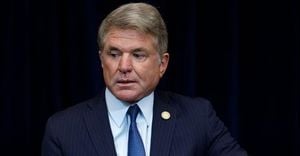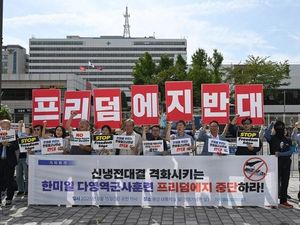On September 15, 2025, a pair of urgent conversations unfolded in Kashmir, each reflecting the mounting pressures faced by its people. On one hand, mental health professionals sounded alarms over rising depression and anxiety. On the other, political leaders traded barbs about the state’s faltering tourism industry—a sector once hailed as the region’s economic lifeblood but now facing a dramatic downturn. Both issues, as it turns out, are deeply intertwined, painting a portrait of a community grappling with uncertainty, loss, and the search for hope.
In a candid interview with KO’s Syed Muhammad Burhan, Senior Clinical Psychologist Dr. Mohammad Muzaffar Khan laid bare the scope of the mental health crisis gripping Kashmir. Dr. Khan described a surge in depression and anxiety cases, attributing much of the distress to “relationship challenges, social problems, and lifestyle changes.” According to Dr. Khan, understanding what truly defines depression—and how it manifests in daily life—is critical. “We often overlook the prerequisites to understanding mental health,” he explained, emphasizing the need for greater awareness and education. “People need to recognize the signs early, so they can seek help before things spiral.”
Dr. Khan’s observations are echoed in the lived experience of many Kashmiris, who find themselves navigating not just personal struggles but also the broader socioeconomic tremors shaking the region. As Dr. Khan put it, “Addressing the mental health crisis requires more than just individual therapy. It’s about building awareness and creating a supportive environment for everyone.” He stressed that only by tackling the stigma around mental health and encouraging open discussion can society begin to heal. “Creating awareness is essential for building a healthier society,” he said, underscoring the urgency of collective action.
Meanwhile, the economic backdrop to this mental health crisis is becoming increasingly dire. On the same day as Dr. Khan’s interview, BJP spokesperson Manzoor Bhat delivered a scathing critique of the National Conference government, blaming it for what he called a “failure to revive tourism in Jammu and Kashmir.” In remarks reported by KO and other outlets, Bhat described tourism as the “economic lifeblood of Kashmir, supporting hoteliers, shikaras, houseboat owners, and young entrepreneurs.” Yet, he painted a bleak picture of the current reality: “Right now, everyone is deeply worried. Financial conditions have plummeted, and people are struggling.”
Bhat recounted stories of locals who had taken out loans and even mortgaged their homes to renovate hotels, only to find themselves unable to support their families. “Some took out loans to renovate their hotels, even mortgaging their homes, and were once providing employment to dozens of families. Now, they can barely support a few,” he said. The hardship, he noted, extends to young people who financed vehicles for tourist transport. “One young man’s mother has cancer, and he’s struggling to pay the car installments and afford her treatment. It’s a very difficult situation.”
The statistics tell a stark story. According to Bhat, from 2020 to 2024, Kashmir welcomed over 76,000 crore visitors, including 147,000 foreign tourists. In September 2024 alone, around 100,000 tourists—including 3,500 foreign visitors—arrived in the region. But just a year later, in September 2025, those numbers plummeted: only 9,000 tourists visited, with just 406 from abroad. The collapse has sent shockwaves through the local economy, leaving many without a safety net.
Political tensions have only added fuel to the fire. Bhat condemned recent remarks by National Conference leaders, particularly Dr. Farooq Abdullah’s statement at a marriage function that Kashmir needs a “tourism revival.” Bhat called the comment “not only misleading but ironic,” pointing to what he described as the National Conference’s “absolute failure” to promote and revive the sector during Omar Abdullah’s tenure as Chief Minister. “The sector was neglected then, and now we’re paying the price,” Bhat insisted.
In response to the crisis, the BJP has called on the Lieutenant Governor to convene a security review meeting focused on reopening key tourist destinations like Doodhpathri and Drang. The aim, Bhat said, is to introduce enhanced safety measures that could help restore confidence among potential visitors. The party has also reiterated its commitment to making Jammu & Kashmir a “global tourism hub,” promising to ensure “peace, prosperity, and dignity for all citizens.”
Yet, beneath the political maneuvering lies a more personal story—a story of resilience tested by hardship, and of a community struggling to find its footing. For many Kashmiris, the collapse of tourism isn’t just an economic issue; it’s a source of deep psychological stress. The loss of livelihoods, mounting debts, and uncertainty about the future have all contributed to a sense of despair that Dr. Khan and other mental health professionals are seeing play out in their clinics every day.
“Mental health and economic stability are closely linked,” Dr. Khan noted in his interview. “When people lose their jobs or face financial insecurity, it can trigger or worsen depression and anxiety.” He urged policymakers to consider the broader impact of economic downturns on public health, warning that the costs of inaction could be severe. “If we don’t address these problems together, we risk deepening the crisis.”
While the government’s focus on reopening tourist sites and boosting visitor numbers is a step toward economic recovery, many experts argue that more needs to be done to support those already suffering. Dr. Khan advocates for community-based interventions, increased funding for mental health services, and a concerted effort to destigmatize mental illness. “It’s not enough to just talk about awareness,” he said. “We need real resources and a commitment from leaders at every level.”
For now, the people of Kashmir continue to wait—some for tourists to return, others for the promise of a healthier, more supportive society. As political leaders debate and mental health professionals sound the alarm, the region stands at a crossroads. Will it find a way to address both the economic and emotional wounds that run so deep? The answer, many believe, will shape the future of Kashmir for years to come.
In the end, the intertwined crises of mental health and economic hardship have forced Kashmir to confront uncomfortable truths about resilience, community, and the need for change. Whether through political action, greater awareness, or simply the courage to seek help, the path forward remains both urgent and uncertain. But as Dr. Khan and others have made clear, the stakes could not be higher.




